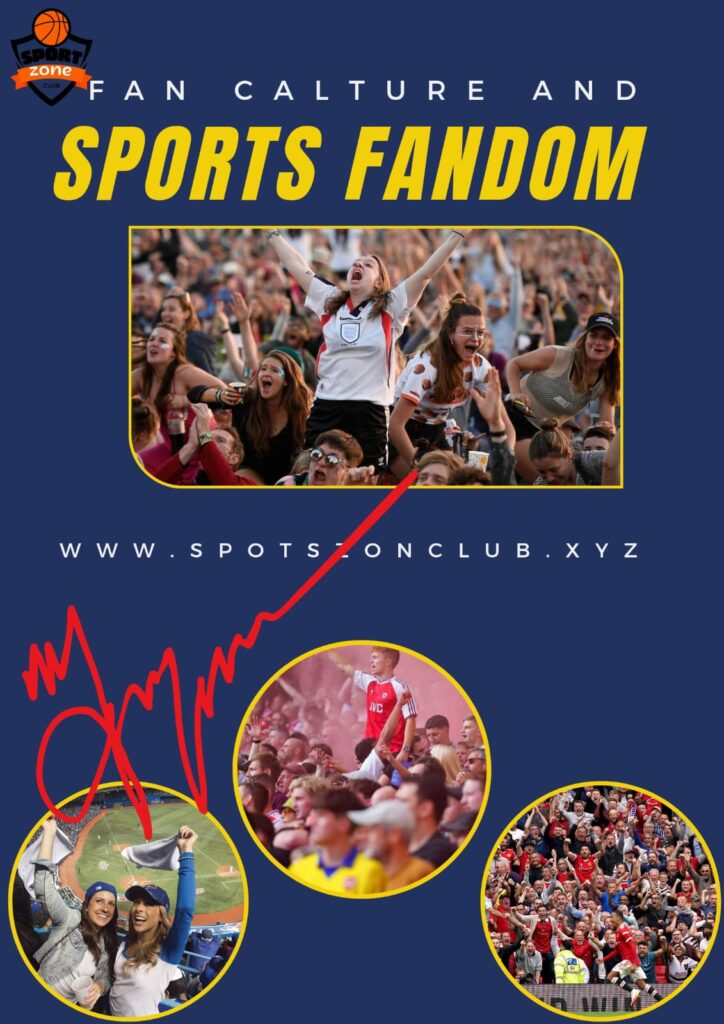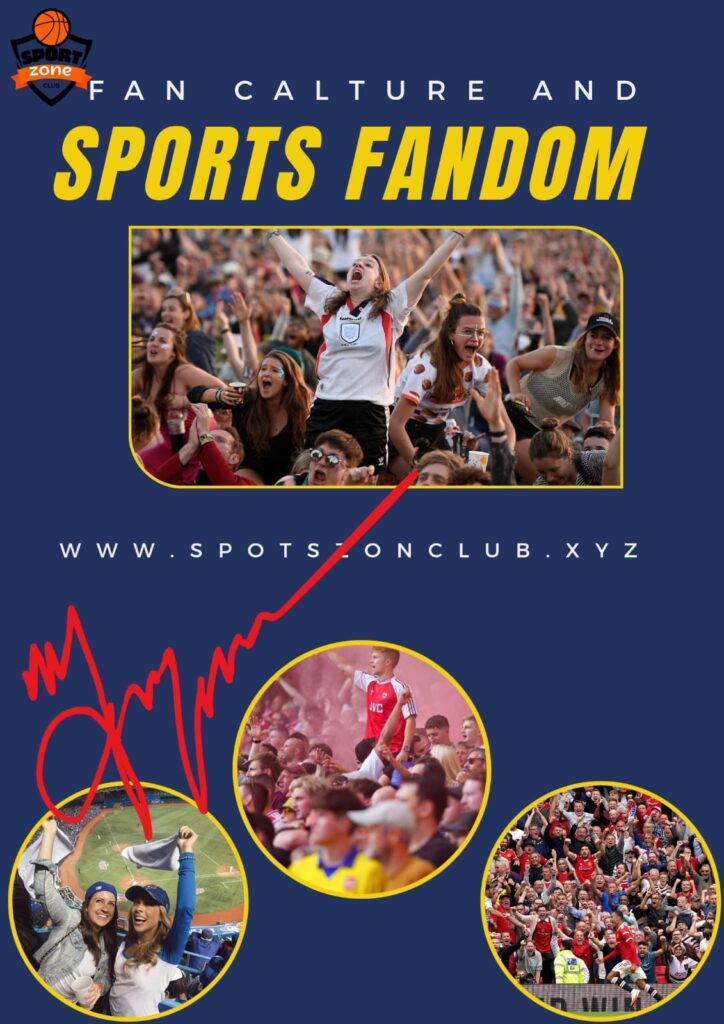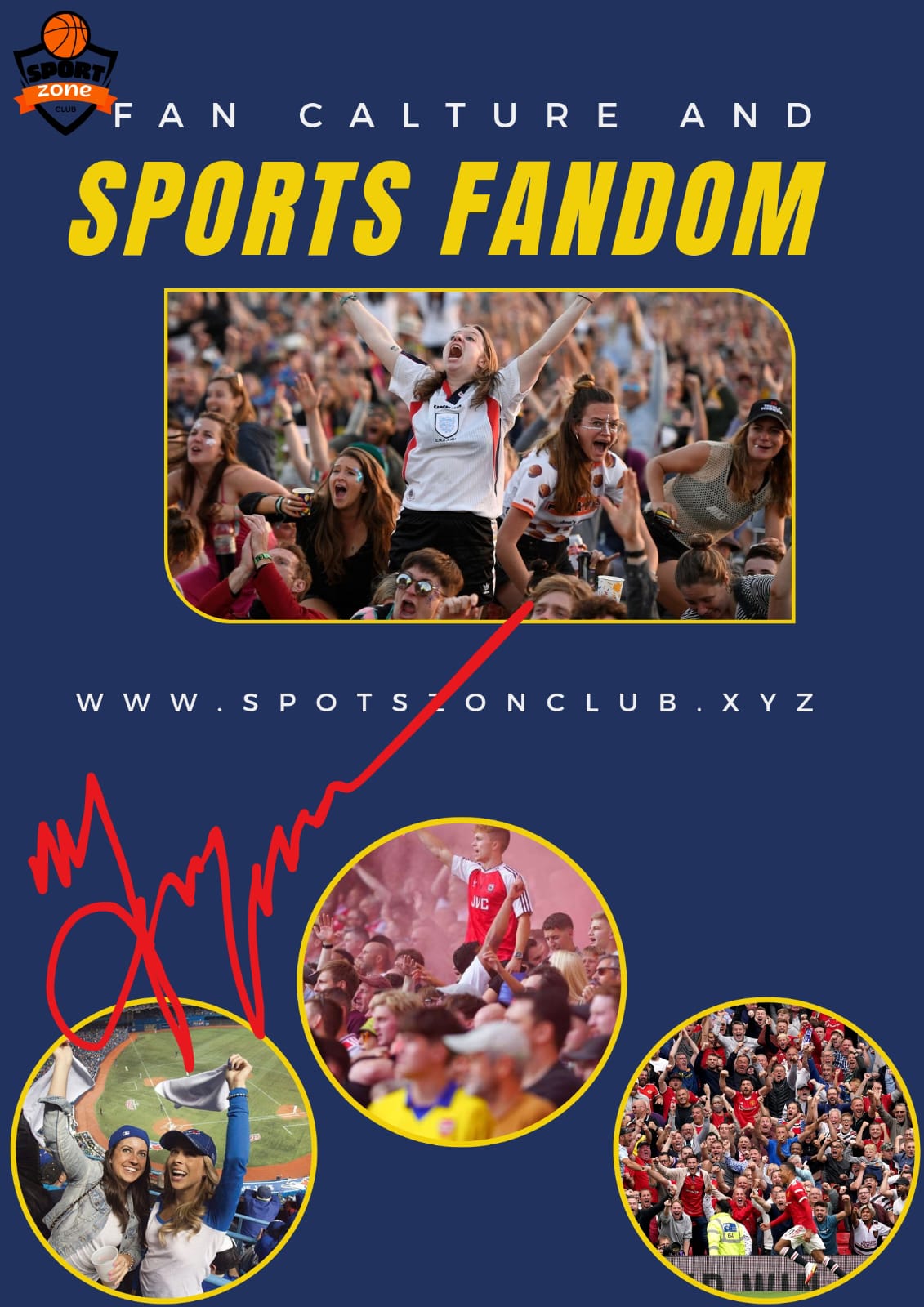Introduction
Fan culture and sports fandom speak to a imperative and energetic angle of the sports world, impacting how diversions are experienced, celebrated, and shared. This culture envelops the enthusiastic associations fans have with their groups, the customs and conventions they take after, and the ways they lock in with sports both online and offline. Understanding the complexities of fan culture gives knowledge into the capable part it plays in forming the sports industry and improving the encounters of competitors and onlookers alike.

The Advancement of Sports Fandom
Sports fandom has advanced altogether from its early roots. Verifiably, fan dependability was to a great extent nearby, with communities reviving around territorial groups or competitors. Nowadays, globalization and advanced media have broadened the scope of fandom, permitting fans to back groups and competitors from around the world. The rise of universal sports associations, such as the English Chief Association and the NBA, has contributed to this worldwide development, making a assorted and interconnected fan base. Cutting edge fandom is characterized by a mix of nearby pride and worldwide network, reflecting the changing scene of sports and media.
The Brain research of Fandom
The brain research of sports fandom is driven by a extend of enthusiastic and social variables. Fans frequently create profound individual associations to their groups, which can give a sense of personality, having a place, and community. This association is established in shared encounters, collective celebrations, and communal battles. Inquire about has appeared that sports fandom can affect mental well-being, giving both bliss and comfort amid triumphs and massacres. The sense of community and personality shaped through fandom can be especially solid, advertising enthusiastic back and a sense of reason in fans’ lives.
Customs and Traditions
Rituals and conventions are central to sports fandom, forming how fans encounter and express their enthusiasm. These hones can extend from pre-game customs, such as wearing group colors or going to tailgate parties, to in-game behaviors, like chanting and singing. Conventions change broadly among distinctive sports and districts, reflecting the interesting social settings in which they are practiced. For occurrence, soccer fans may lock in in expound chants and shows of back, whereas American football fans might take an interest in pre-game ceremonies and celebrations. These ceremonies cultivate a sense of solidarity and progression among fans, improving their association to the wear and to each other.
The Part of Advanced Media and Social Networks
Digital media and social systems have revolutionized sports fandom, advertising modern stages for fans to interface, share, and lock in with sports substance. Social media stages such as Twitter, Instagram, and Facebook permit fans to connected with groups, competitors, and other supporters in real-time. These stages encourage the sharing of upgrades, suppositions, and fan-generated substance, making a dynamic online community. Furthermore, sports websites and apps give fans with get to to live scores, highlights, and elite substance. The advanced age has empowered fans to lock in with sports on a more individual level, cultivating a sense of promptness and connection.
Fan Character and Merchandise
Fan character is frequently communicated through sports stock, which plays a critical part in fandom culture. Stock, counting shirts, caps, and scarves, permits fans to unmistakably show their bolster and association with their groups. This frame of expression is not as it were a way to celebrate group triumphs but too a implies of making a sense of having a place and personality. Sports organizations and brands capitalize on this perspective of fandom by advertising a wide run of items and making promoting campaigns that resound with fans. The enthusiastic connection to stock reflects the more profound association fans have with their groups and the don itself.
The Affect of Fandom on Competitors and Teams
Fandom has a significant affect on competitors and groups, impacting their execution, inspiration, and open recognition. The bolster and support from fans can give competitors with a sense of approval and inspiration, upgrading their execution on the field. Then again, negative feedback or weight from fans can too influence athletes’ mental and enthusiastic well-being. Groups and competitors frequently lock in with fans through social media, fan occasions, and community outreach, recognizing the significance of keeping up a positive relationship with their supporters. The corresponding relationship between fans and competitors is a key component of sports culture, forming both person and collective experiences.
The Commercialization of Fandom
The commercialization of sports fandom has ended up progressively apparent, with sports organizations and media companies leveraging fan engagement for monetary pick up. Sponsorships, promoting, and promoting are necessarily to the sports industry, creating noteworthy income and forming the fan encounter. Whereas commercialization has extended the reach and perceivability of sports, it has too raised concerns around the affect on fan devotion and the realness of the fan involvement. Adjusting commercial interface with the honest to goodness enthusiasm of fans is an continuous challenge for the sports industry, as it endeavors to keep up the keenness of the fan involvement whereas capitalizing on its financial potential.
The Future of Sports Fandom
The future of sports fandom will likely be molded by continuous innovative headways and moving social patterns. Developments such as virtual reality (VR) and increased reality (AR) are balanced to offer modern ways for fans to involvement and connected with sports substance. The integration of these innovations will make immersive encounters, permitting fans to lock in with sports in novel and energizing ways. Moreover, the developing center on differing qualities and consideration inside sports is anticipated to impact fandom culture, cultivating a more comprehensive and agent environment. As the sports scene proceeds to advance, fan culture will adjust and change, reflecting the changing elements of the sports world.

Conclusion
Fan culture and sports fandom are indispensably to the sports encounter, impacting how diversions are seen, celebrated, and shared. From the advancement of fandom and the brain research behind it to the part of computerized media and commercialization, these components shape the way fans connected with sports and express their enthusiasm. As innovation and social patterns proceed to advance, fan culture will adjust, advertising unused openings for engagement and association. Understanding the complexities of sports fandom gives important knowledge into the capable part it plays in forming the sports industry and improving the encounters of competitors and fans alike.


Leave a Reply